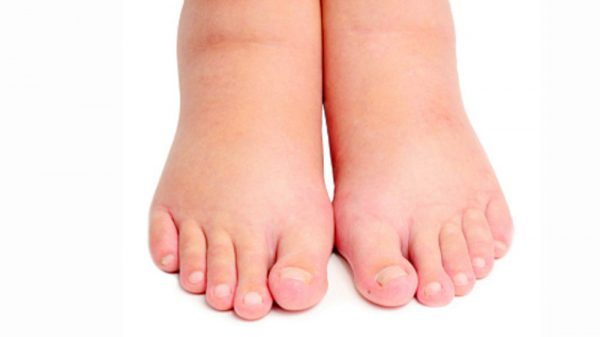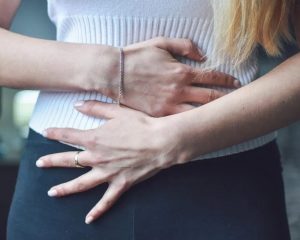Cirrhosis and ascites involve fluid buildup in the abdomen. In fact, this condition can result in 10 liters of fluid being drained from the stomach. It’s normal for the abdomen to have some fluid. However, the problem is when fluid buildup results in lots of the stuff clogging up the abdomen. This is one of the possible complications if you have liver cirrhosis. In some situations, it can cause a lot of health issues depending on how much fluid gets stored in the gut. In the case of cirrhosis, it’s all related to liver function being affected and too much fluid in the abdomen.
The good news is you can take steps to treat and prevent the condition. They include low-salt diet, fluid removal, and “shunt” tube. If you have late-stage cirrhosis then the only permanent option is a liver transplant. However, this is a complex and pricey option so it’s better to manage liver cirrhosis as effectively as possible to prevent you from developing late-stage cirrhosis. This can save a lot of time, effort, and money. For example, simply avoiding a high-sodium diet can help to manage ascites since salt causes water retention. That can make your situation worse
What Are Cirrhosis and Ascites?
These are two health conditions that are closely connected. Liver cirrhosis is a late-stage liver disease that’s Stage 3 of the disease. The different stages are:
- Stage 1: Inflammation
- Stage 2: Fibrosis (Scarring)
- Stage 3: Cirrhosis
- Stage 4: Liver Failure
The early stages of liver disease mostly involve something called “fatty liver” then fatty liver disease (FLD). This includes a fat buildup in the vital organ. It starts with somewhat high amounts of fat in the liver. However, if this condition progresses it becomes known as FLD.
If the liver disease progresses it might move on to hepatitis cirrhosis, which involves the infection that’s spread through body fluids like saliva and blood. This often develops then becomes liver cirrhosis. However, sometimes liver cirrhosis develops directly from FLD.
The two main causes of cirrhosis are alcoholic and non-alcoholic. When people think of cirrhosis they often think about the alcoholic liver disease (ALD). However, it’s also possible to get this condition without becoming a heavy drinker. In fact, sometimes non-alcoholic fatty liver disease (NAFLD) develops into cirrhosis.
Regardless of the cause, cirrhosis involves liver scarring. While fibrosis involves the first signs of liver scarring liver cirrhosis involves more serious scarring that can affect liver function.
The first stage of cirrhosis involves little scarring and no complications. That changes in the latter stages. There are various possible complications including fluid buildup in the abdomen known as “ascites.”
The amount of fluid involved in ascites can vary. In mild cases, it’s often tough to detect the fluid. However, in serious cases, the abdomen sticks out far.
Cirrhosis is the most common cause of this condition. It’s also known as “beer belly.” Since it’s often linked to heavy alcohol drinking. However, there are various other causes including stomach cancer and tuberculosis.
When there’s fluid buildup this can cause various health conditions like shortness of breath. Other complications include jaundice (yellowish skin and eyes).
Cirrhosis and Ascites: Treatment
1. Paracentesis (fluid removal)
This usually involves using a needle to remove fluid from the abdomen. This can be quite effective at removing extra fluid in the abdomen. If you’re not a fan of needles then you might want to avoid this option. Spoiler alert: It involves a long needle. However, it could be argued that the benefits are worth the temporary pain/discomfort.
2. Water tablets
The fancy term for these products is “diuretics.” You can go with DIY, over-the-counter, or prescription versions. The function of these pills is to increase urination. When that happens you’ll also reduce abdominal fluid and ascites symptoms.
One caveat to keep in mind is water tablets shouldn’t replace reducing salt intake. In other words, eating lots of salt then urinating more won’t reduce your net salt intake. It’s critical to reduce sodium and use water tablets if you want to provide the most effective treatment for reducing abdominal fluid.
3. Shunt (tube)
This involves placing a tube around the liver’s veins. This helps to drain a large amount of fluid. This can provide various other benefits like lower blood pressure (liver vein) and better liver function.
4. Reduce salt intake
This is one of the most critical steps to take if you’ve been diagnosed with ascites. The reason is sodium causes fluid retention, which can cause it to build up in the gut. Make sure you consume less than 1500mg of sodium per day. This is the figure for most adults, although it’s different for kids, teens, and seniors.
When reducing salt intake there are various ways you can do that. We often focus on our sure of table salt. However, this is just one source of white grains. You should also look at the ingredient labels. Many products like potato/corn chips and pretzels tend to be sky-high in sodium. However, other products have “hidden” salt that might be surprising.
Cirrhosis and Ascites: Prevention
1. Eat under 1500mg of sodium/daily
This is the recommended daily amount for most adults. This figure is much lower than many people think. For example, one TBSP of soy sauce can have 1000mg of sodium, which is two-thirds of what you need for one DAY. When possible avoid table salt and go with low-salt varieties of pre-packaged foods.
2. Limit NSAIDs
This includes medicines like aspirin and Advil. The reason is these OTC medicines cause an effect on the kidneys. That, in turn, can boost how much salt/water the body retains. That’s directly related to ascites since both substances can cause fluid buildup in the body. It’s a situation you’ll want to avoid.
3. Weigh yourself often
It’s important to keep track of your weight daily. You should watch out for fast weight gain. If you gain 2+ pounds daily for 3 days in a row or put on 10+ pounds then these are signs you might have ascites. If you start gaining quick weight then you should consider some changes in your diet/lifestyle to help prevent ascites.
4. Exercise regularly
This can provide various anti-ascites benefits. For example, it can help to maintain a healthy weight. It can also help to get the “juices” flowing to help your body get rid of fluids and prevent buildup in the abdomen. Make sure to get at least 30 minutes of light exercise daily.
It’s even better to get in an hour of weight-resistance or cardio exercise most days of the week. Besides helping to fight ascites it can also provide other benefits related to your heart, blood, lungs, muscles, brain, etc.
5. Reduce alcohol drinking
The best option is to ditch all alcohol. However, if you don’t do that then you should consider reducing your alcohol intake. A good option would be very rare alcohol drinking. If you already have a late-stage liver disease then no alcohol can help treat cirrhosis and ascites.























